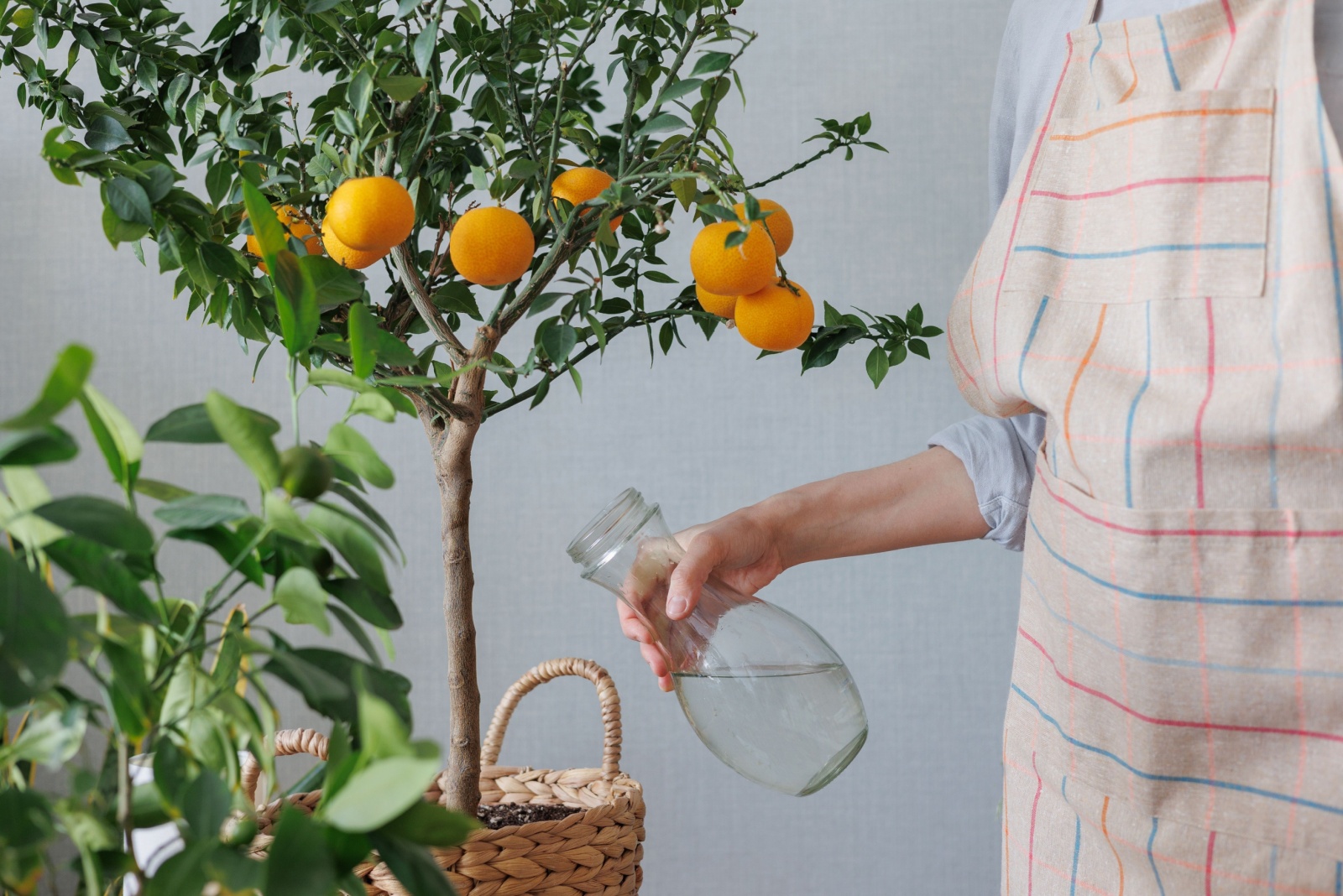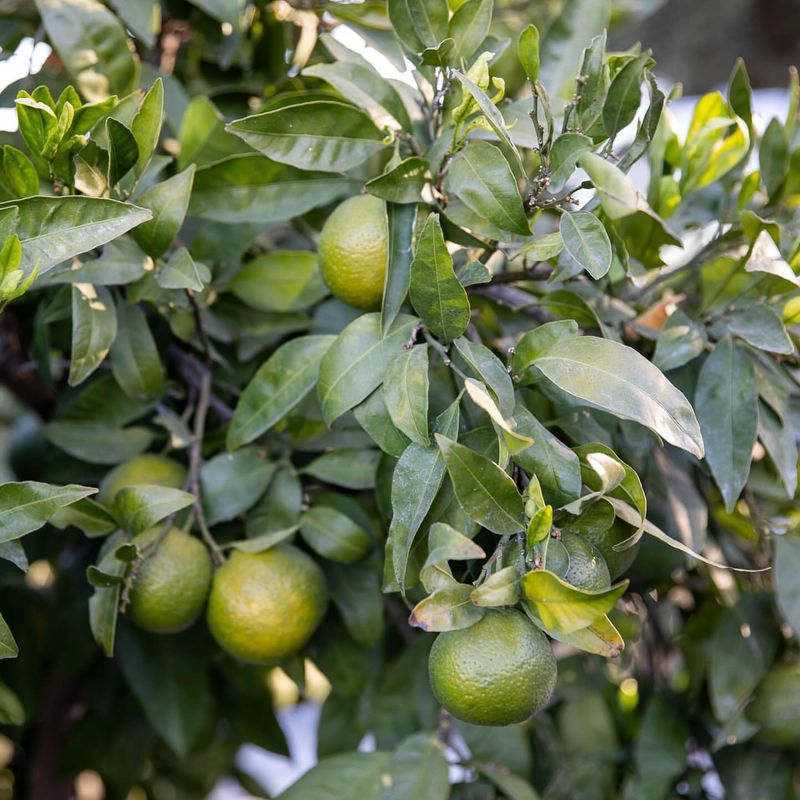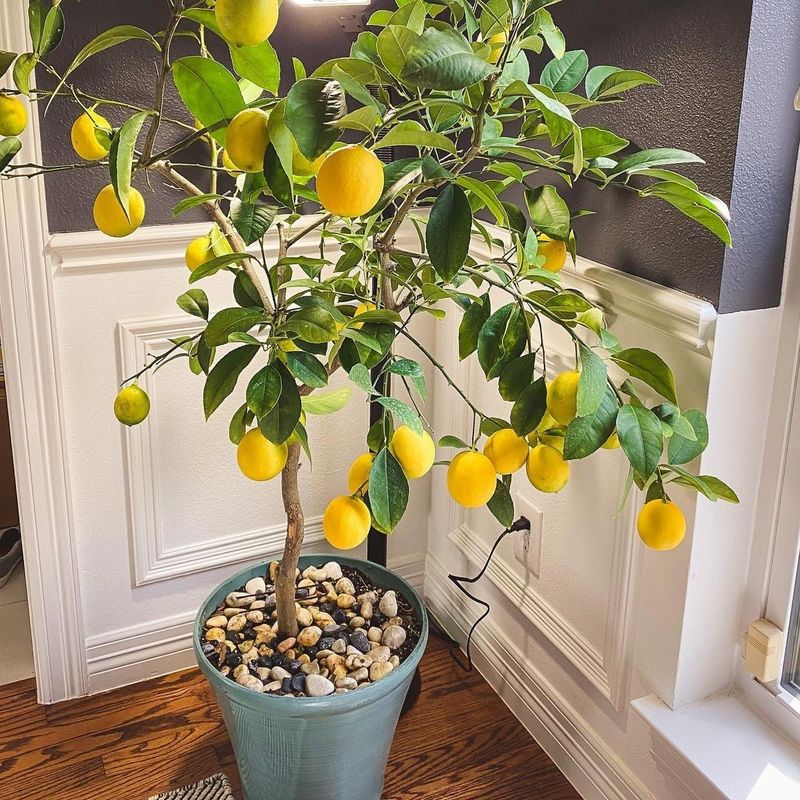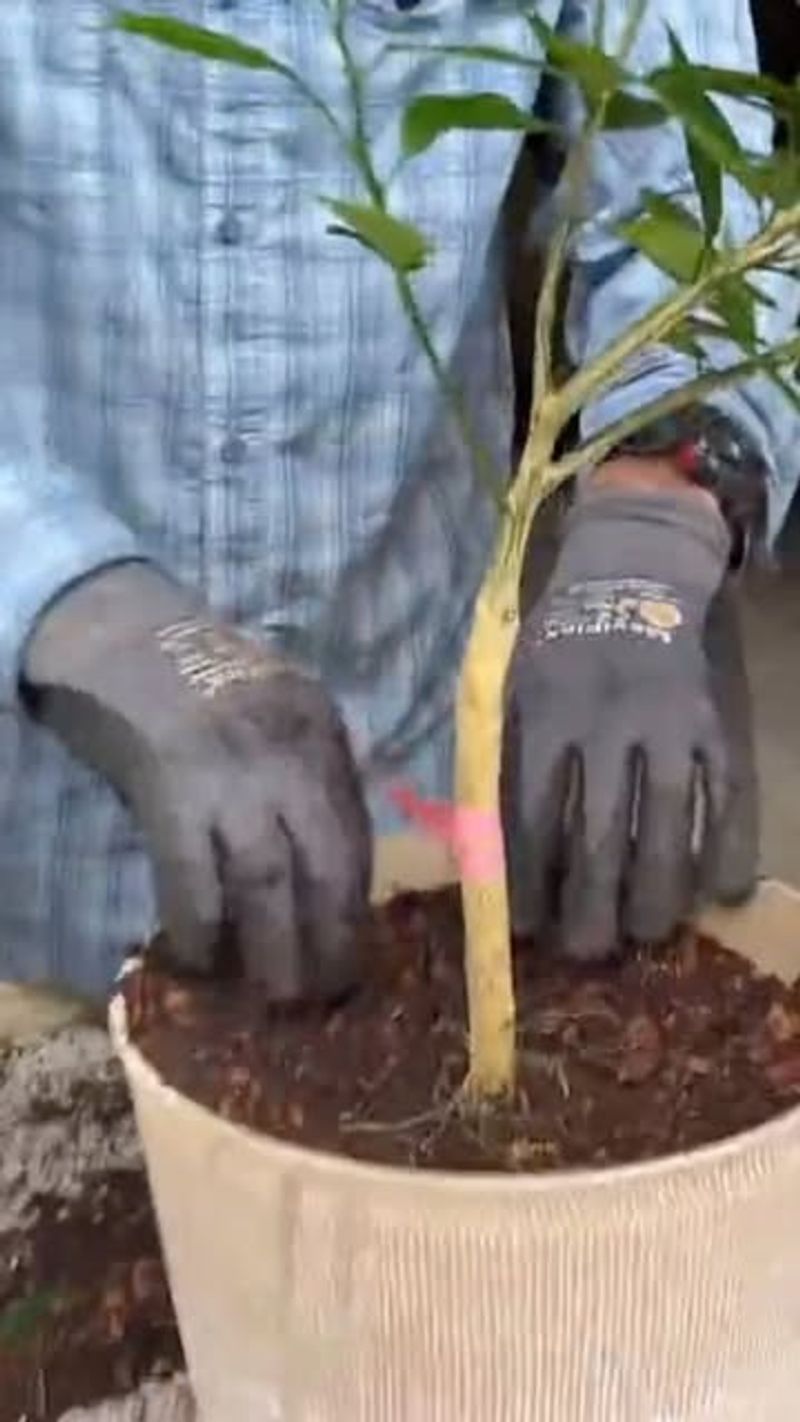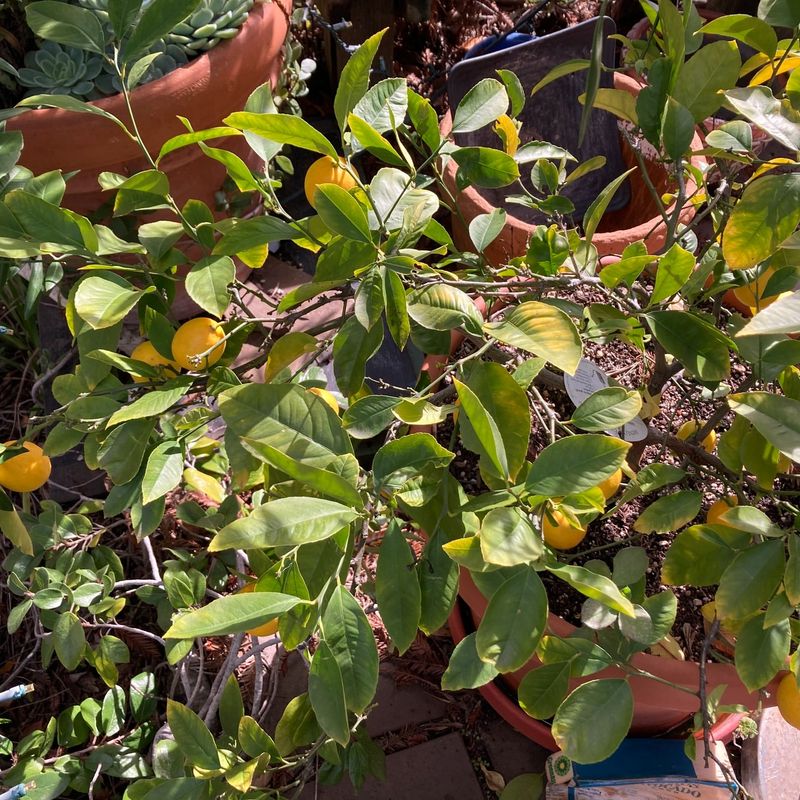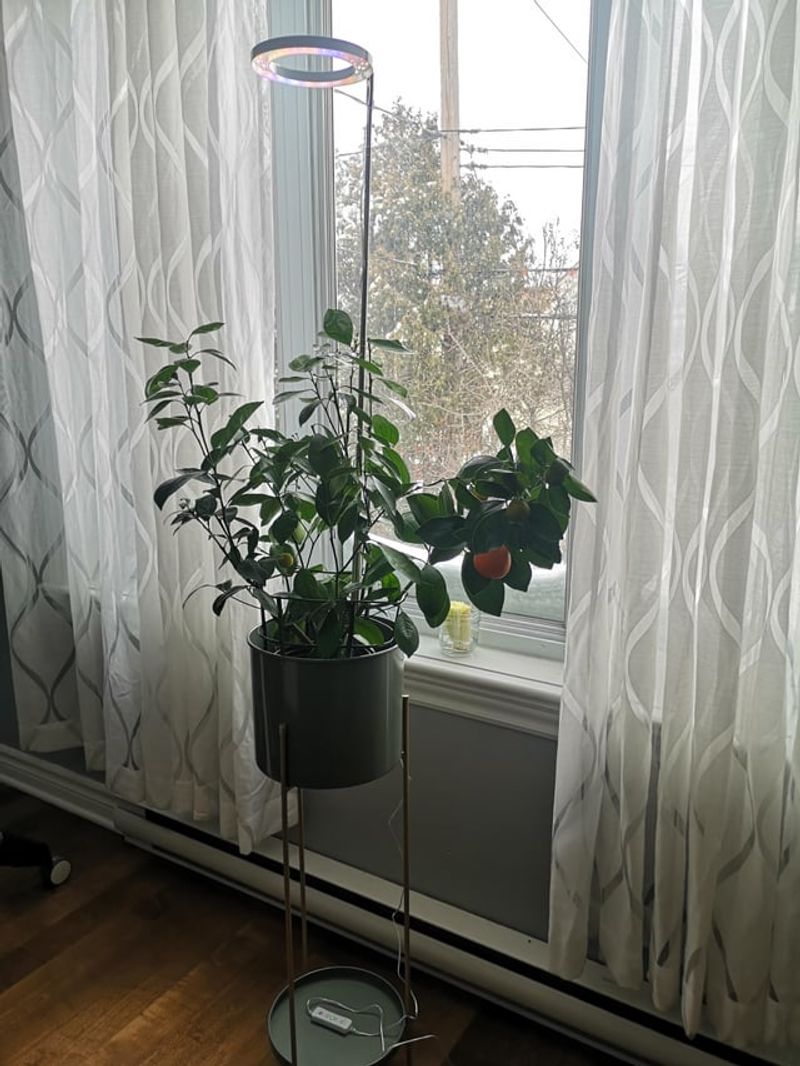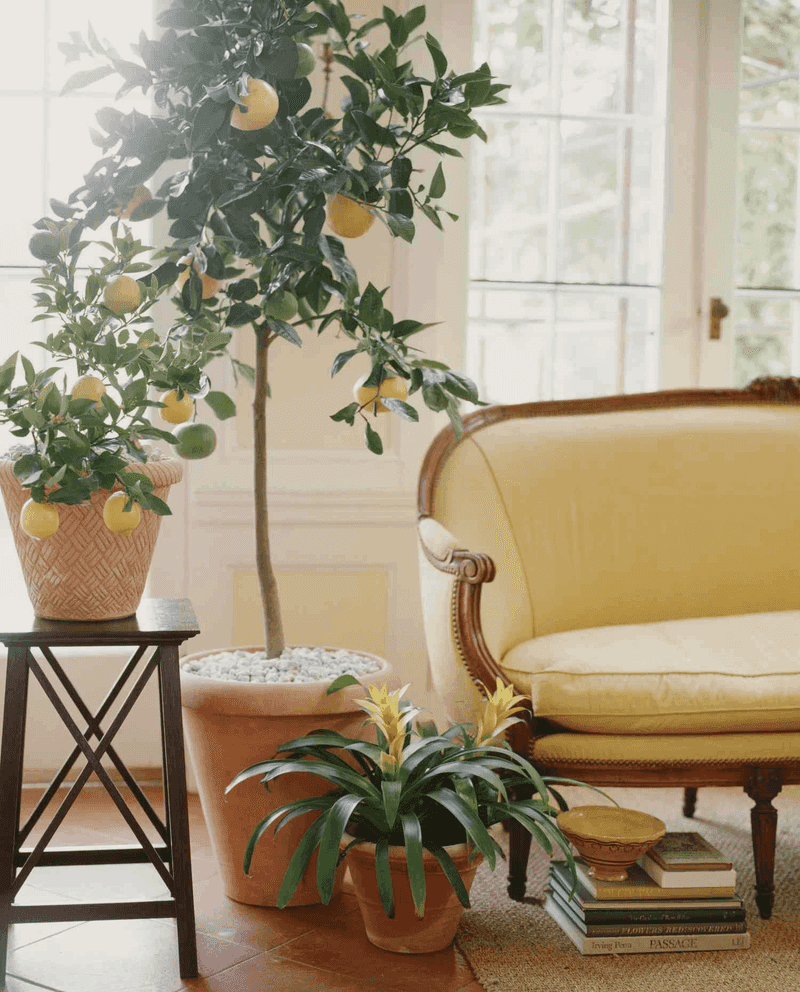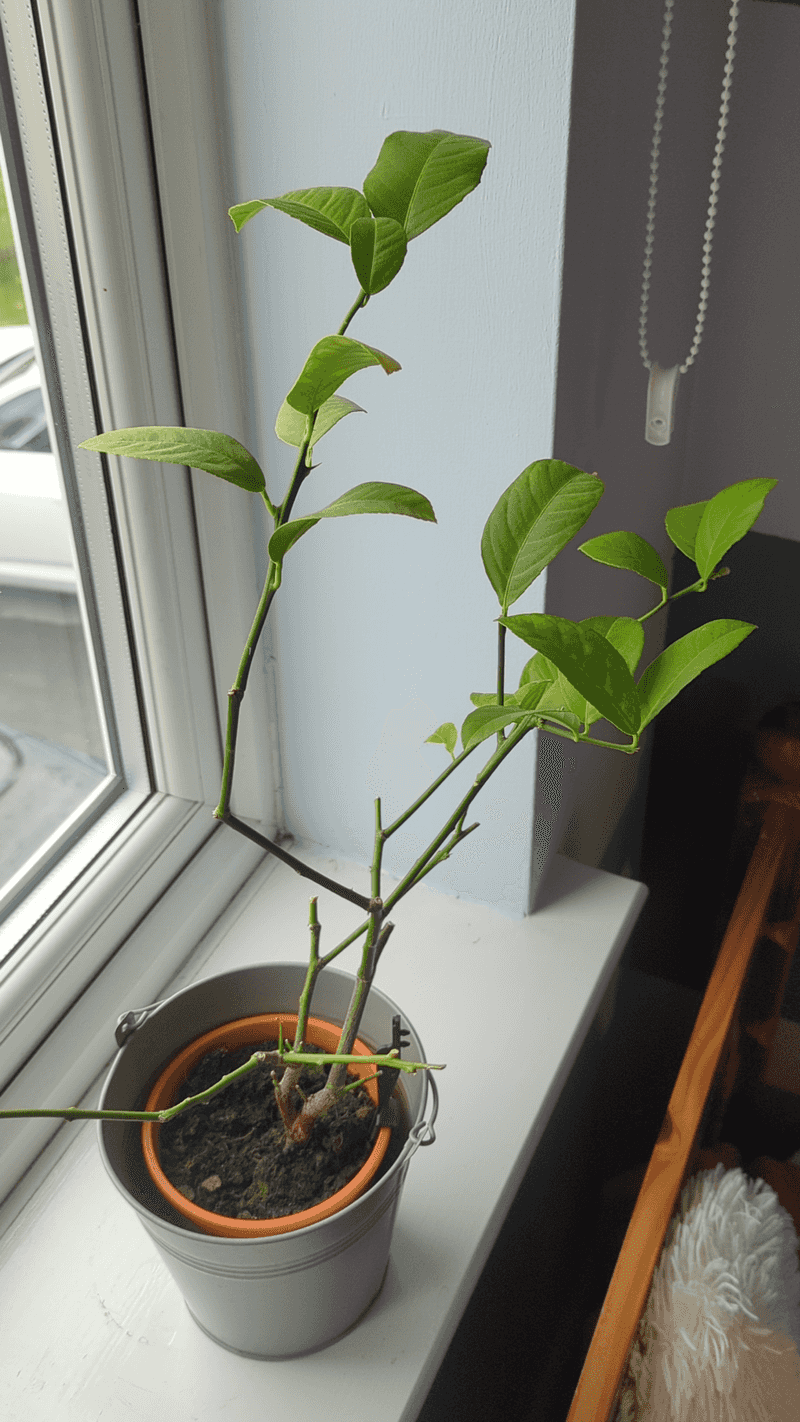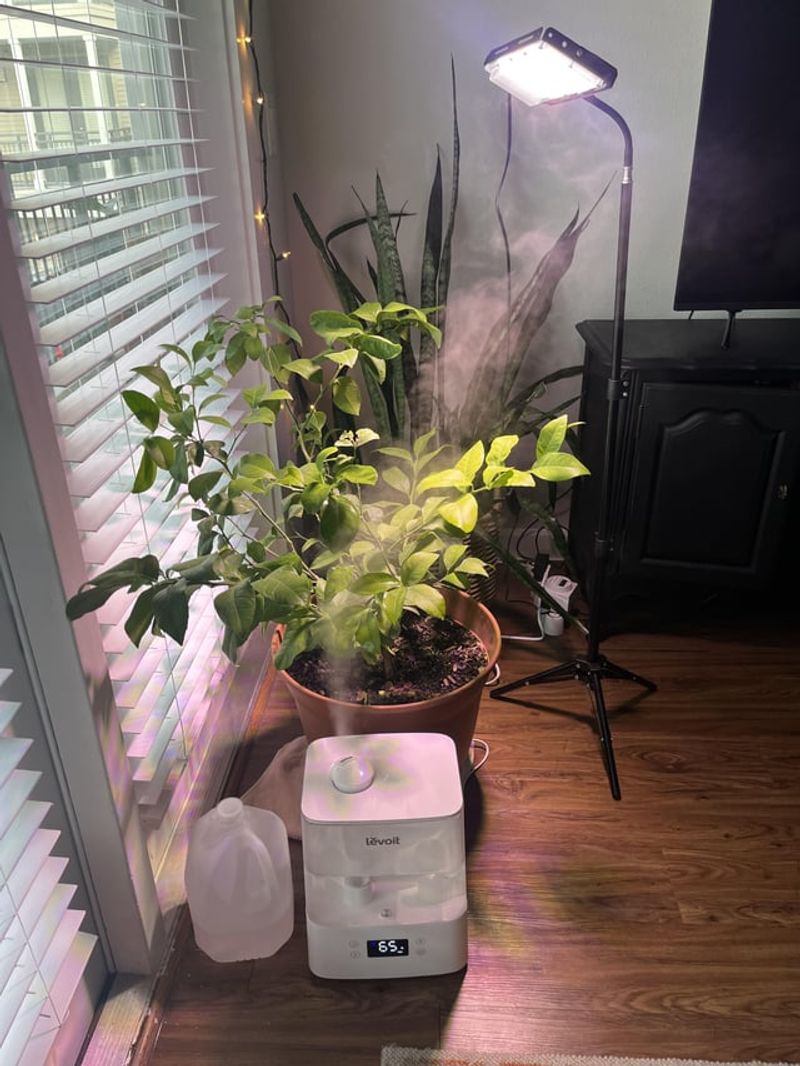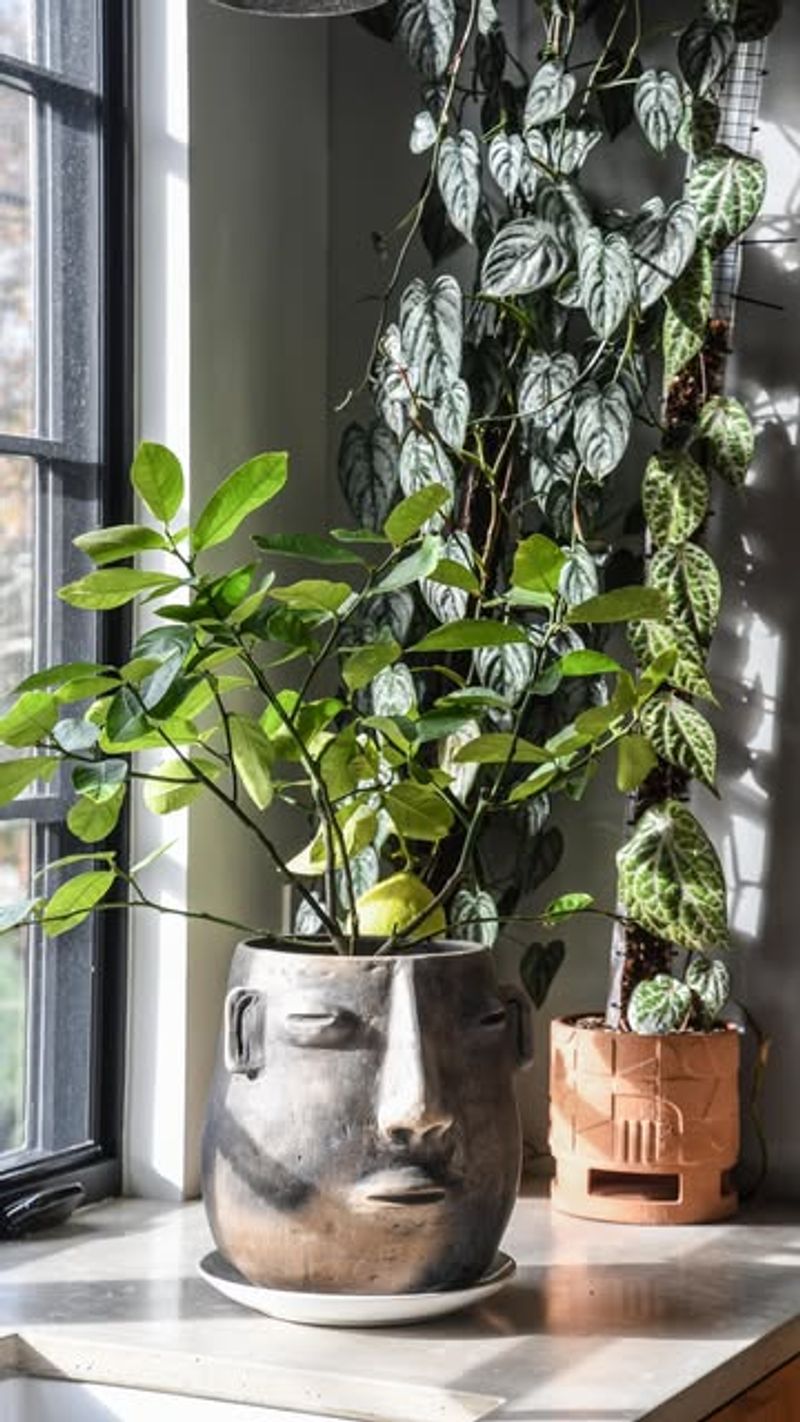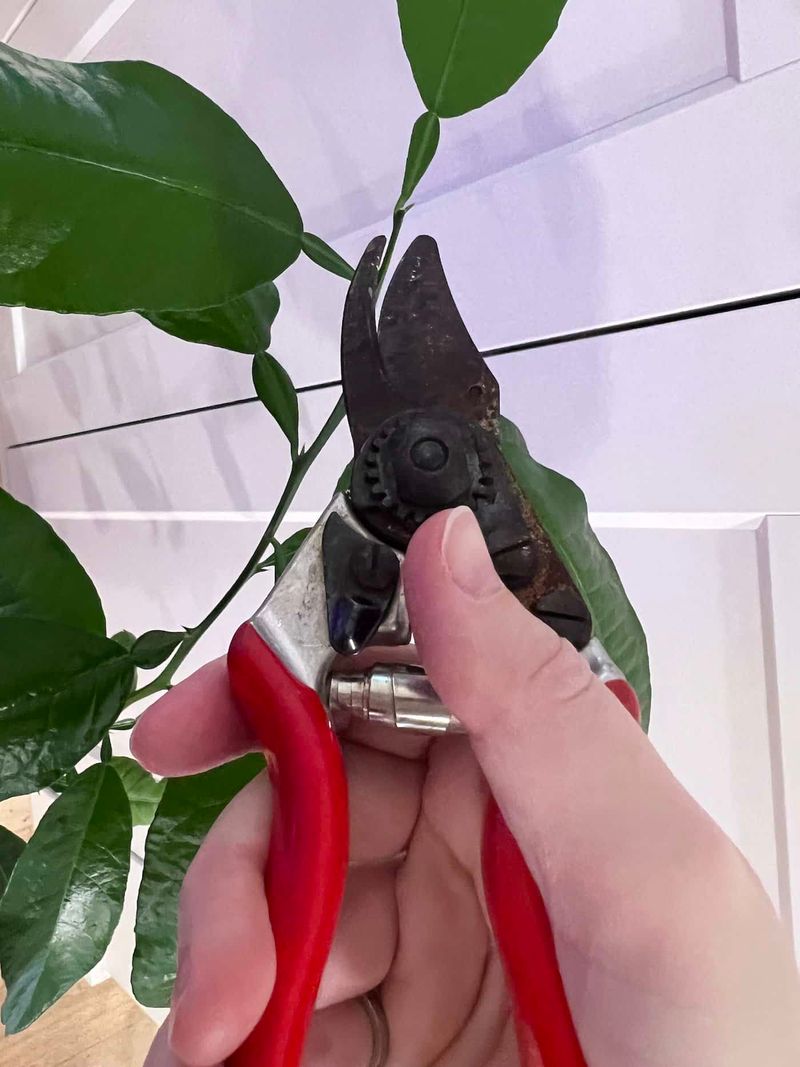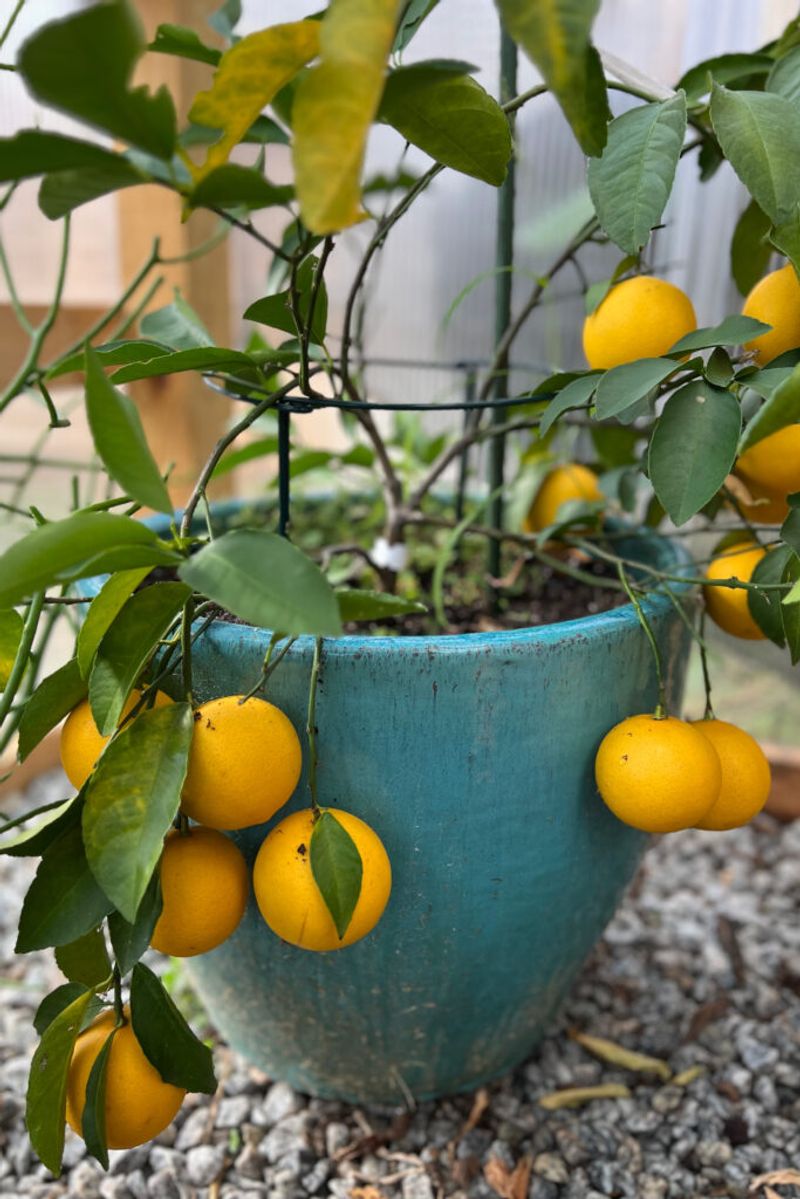Growing citrus trees indoors in Florida is a sweet way to enjoy fresh fruit year-round. You don’t have to worry about frost or wild weather—just sunshine and steady care. It’s like bringing a slice of the grove inside.
Thanks to Florida’s natural humidity and abundant light, citrus trees thrive even in living rooms and sunrooms. With a little attention, you can keep up to a dozen trees happy. Lemons, limes, and oranges right at your fingertips.
There’s something deeply satisfying about harvesting fruit from your own indoor garden. It’s a rewarding project that adds beauty, fragrance, and flavor to your home. And once it’s set up, the payoff lasts all year.
1. Select Dwarf Varieties
Standard citrus trees grow too large for indoor spaces, so dwarf varieties are your best friends. Meyer lemons, key limes, and calamondin oranges naturally stay smaller and adapt well to container life.
My neighbor in Tampa successfully grows all three in her sunroom, proving you don’t need acres of land for a productive mini-orchard. The compact nature of these trees makes managing all 12 much simpler.
Look for trees grafted onto dwarfing rootstock at local Florida nurseries, which typically offer varieties specifically suited to our climate and growing conditions.
2. Container Selection Matters
Choose containers at least 12-15 inches in diameter with good drainage holes. Terracotta pots work exceptionally well because they allow roots to breathe and prevent waterlogging.
Weight becomes an issue when you’re managing multiple trees. Plastic containers might be easier to move around your Florida home during hurricane season or unexpected cold snaps.
Each of your 12 trees will eventually need to be repotted as they grow, so select containers that allow for 1-2 inches of growth space around the root ball.
3. Create The Perfect Soil Mix
Regular potting soil holds too much moisture for citrus roots. Mix equal parts potting soil, perlite, and coconut coir to create a fast-draining environment that citrus trees love.
Adding a cup of worm castings to each pot provides slow-release nutrients without burning delicate roots. During my years growing citrus in my Florida condo, this mix consistently produced healthy trees.
Avoid garden soil entirely – it compacts too easily in containers and may introduce pests or diseases to your indoor growing environment.
4. Master Indoor Watering Techniques
Overwatering kills more indoor citrus trees than underwatering. Wait until the top 2 inches of soil feel dry before giving your trees a thorough drink.
Florida’s humidity helps reduce watering frequency compared to drier climates. During summer months, my 12 trees typically need water every 5-7 days, while winter might stretch to 10-14 days between waterings.
Use room temperature water and allow excess to drain completely. Never let pots sit in standing water, which leads to root rot and eventual tree death.
5. Maximize Natural Light Exposure
South-facing windows provide ideal light conditions for indoor citrus. Place your trees within 2 feet of windows to capture maximum sunlight throughout the day.
Rotating pots weekly ensures even growth and prevents trees from leaning. In Florida, natural light varies seasonally, so adjusting positions helps maintain consistent exposure for all 12 trees.
Clean window glass regularly – dust and dirt can reduce light transmission by up to 30%, significantly affecting your trees’ health and fruit production over time.
6. Supplement With Grow Lights
Even in sunny Florida, indoor locations rarely provide enough light for optimal fruiting. Full-spectrum LED grow lights hung 12-18 inches above trees can make a tremendous difference in health and productivity.
Run lights for 12-14 hours daily, especially during Florida’s shorter winter days or for trees placed in less sunny spots. Timer switches make this process effortless.
Look for lights in the 5000-6500K range, which mimics natural daylight and promotes flowering and fruiting rather than just leafy growth.
7. Feed With Specialized Fertilizer
Regular houseplant fertilizers lack the micronutrients citrus trees demand. Look for fertilizers specifically labeled for citrus with higher nitrogen and micronutrient content, especially iron and zinc.
Apply at half strength every 6-8 weeks during growing season (February through October in Florida). During winter months, reduce to quarter strength or skip entirely while trees rest.
Yellowing leaves between green veins often indicates iron deficiency, common in Florida’s alkaline water. Adding chelated iron supplements can quickly correct this issue without changing your regular feeding schedule.
8. Control Humidity Levels
Florida’s natural humidity often helps indoor citrus thrive, but air conditioning can create dry spots in your home. Group your 12 trees together to create a microclimate with higher humidity.
Placing containers on trays filled with pebbles and water (keeping pot bottoms above water level) increases local humidity without risking root rot. During winter when heating systems run more frequently, this becomes especially important.
Misting leaves occasionally helps deter spider mites, which prefer dry conditions and can quickly infest indoor trees if humidity drops too low.
9. Pollinate Flowers By Hand
Without outdoor breezes and insects, indoor citrus flowers need help pollinating. Use a small artist’s paintbrush to transfer pollen between flowers during blooming periods.
Gently brush inside each flower, moving from bloom to bloom across all 12 trees. The process takes just minutes but dramatically increases fruit set.
Florida’s humidity actually helps with pollen viability, making this task easier than in drier climates. Perform this ritual during mid-morning when flowers are fully open but pollen hasn’t dried out.
10. Prune For Health And Size Control
Regular pruning keeps indoor citrus trees compact and manageable. Remove any branches growing inward toward the center, which reduces air circulation and creates hiding spots for pests.
Maintain an open vase-like structure with 3-5 main branches. When managing 12 trees in limited space, keeping each one properly sized prevents overcrowding and light competition.
Sterilize pruning tools with alcohol between trees to prevent spreading potential diseases. The best time for major pruning is late winter before the spring growth flush typical in Florida.
11. Prevent And Treat Common Pests
Spider mites, scale insects, and mealybugs frequently attack indoor citrus. Inspect the undersides of leaves weekly, especially during Florida’s warm months when pests reproduce rapidly.
Horticultural oil spray suffocates most pests without harming beneficial insects that might find their way indoors. For my 12 trees, I keep a spray bottle ready for immediate treatment when problems appear.
Wipe leaves with a damp cloth monthly to remove dust and check for early signs of infestation. This simple habit has saved many of my trees from serious pest damage.
12. Manage Seasonal Temperature Changes
Even in Florida, indoor temperatures fluctuate throughout the year. Citrus trees prefer daytime temperatures between 65-80°F and nighttime temperatures no lower than 55°F.
Keep trees away from air conditioning vents in summer and heating vents in winter. Sudden temperature changes stress trees and can cause leaf and fruit drop.
During rare cold snaps that affect even central Florida, move your 12 trees away from windows at night or use a space heater to maintain minimum temperatures if necessary.

